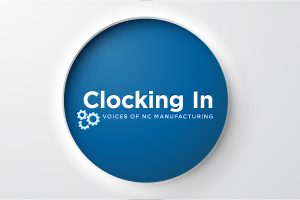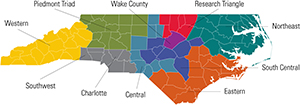The new AS9101 Rev D audit requirements were released last May (2010) and since then, the certification bodies have been getting trained on how to use the new material to audit companies to the recently released AS9100C standard. Between now and July 1, 2011, all certification bodies will be trained on the new auditing material. After July 1, 2011, companies can no longer be certified to AS9100B. By July 1, 2012, all companies must be transitioned to the AS9100C. Here’s some basic information to help you get ready for an audit to AS9100C. (Note: this information can be found in the AS9101 Rev. D standard.)
Prior to the Stage 1 audit, you will need to supply your registrar with the following information:
- Percentage of your total revenue coming from the aviation, space or defense industries
- Number of employees working on jobs for the aviation, space or defense industries
- Your top five aviation, space or defense industry customers
- Any customer-specific approval status (e.g. limited approval, probation, suspension)
During the Stage 1 audit, you will need to supply include the following information:
- A description of your processes and their interactions, including third party processes
- Performance measures and trends for the previous 12 months (Note: if you have a new QMS system, you could use data you may have collected from your customers prior to implementing your QMS)
- On-time delivery and quality performance measures
- Evidence that all the requirements of the AS9100C standard have been met (required procedures & records)
- Audit results (note: these must be process based audits not element based audits)
- Management review results
- Customer satisfaction and complaint summaries
- Identification of high-risk processes and risk management tools
- Identification of special processes and their controls
- Customer specific requirements (FAIs, key items, flow down requirements, etc.)
During the Stage 2 audit, your auditor will be auditing your processes and looking for both conformity to the requirements and effectiveness of your processes. There is a real focus on process effectiveness in the new AS9100C standard, so the certification bodies are going to be evaluating whether or not your processes are effective. For every process, the auditor will determine:
- Is the process identified and appropriately defined?
- Are responsibilities assigned?
- Are the processes implemented and maintained?
- Is the process effective in achieving the desired results?
For each of your key product realization processes, your auditor will complete a Process Effectiveness Assessment Report (PEAR). This PEAR will include the process, its inputs, outputs and interfaces, key process performance indicators, performance targets and performance data. This is a “Shall” for your auditors, so be proactive and make sure you can supply the necessary information.
Each process will be ranked in terms of effectiveness on a scale of 1 to 4. The levels are:
- The process is not implemented, and planned results are not achieved.
- The process is implemented, but planned results are not achieved and appropriate actions are not taken.
- The process is implemented, planned results are not achieved, but appropriate actions are being taken.
- The process is implemented and planned results are achieved.
If you receive a level 1 or 2 ranking, this is considered a major nonconformance. All nonconformances must be resolved and verified by the auditor prior to a recommendation for certification. In developing corrective actions for nonconformances, increased emphasis is being placed on determining root causes. Retraining and counseling are no longer considered root causes. Recurring nonconformances in subsequent surveillance audits will be considered an indication of an ineffective corrective action program and result in a major nonconformance.
The changes in how the audits will be performed are designed to assist in improved audit results by increasing the consistency and standardizing the reporting. It’s time to get ready to transition to AS9100C, so review the above comments and decide what steps you need to take to meet the new auditing requirements.


